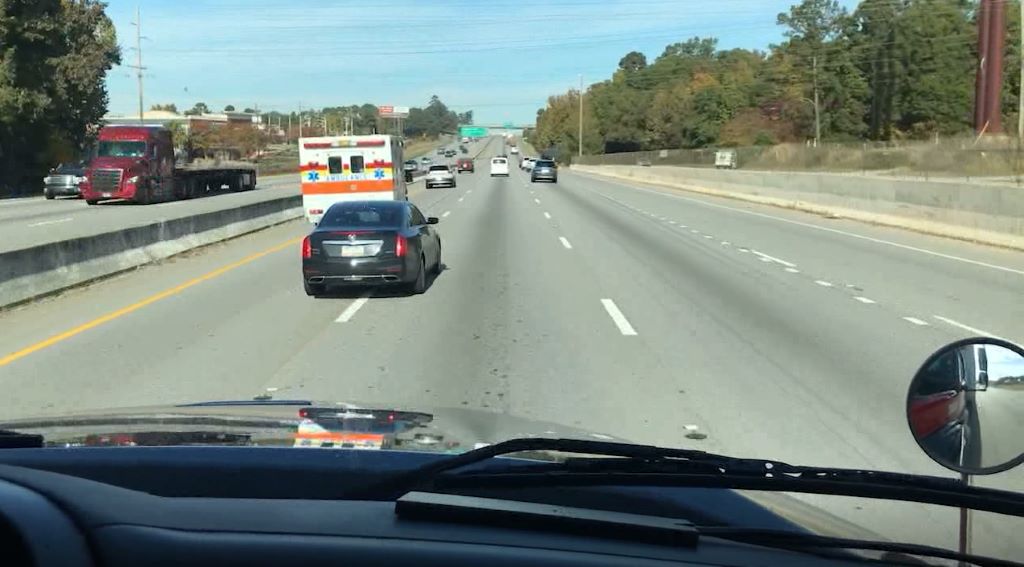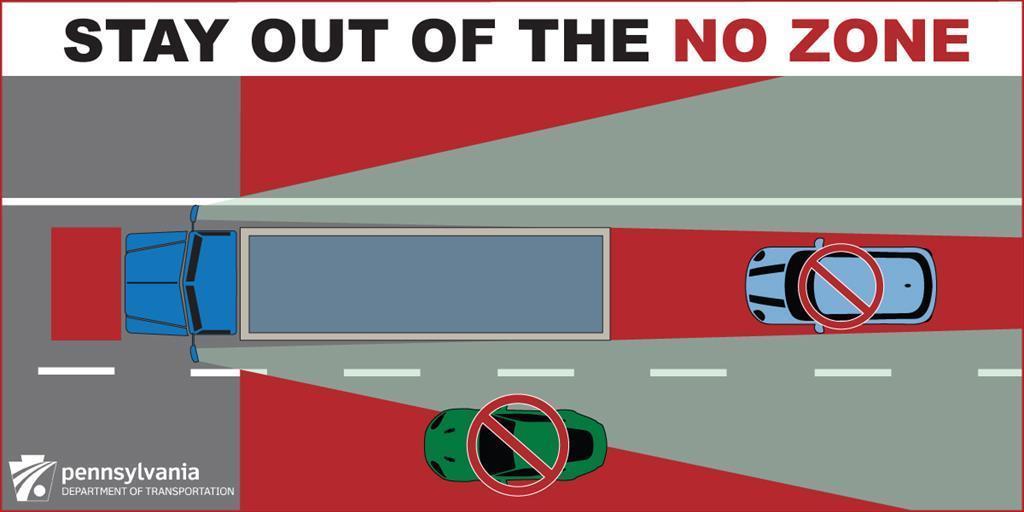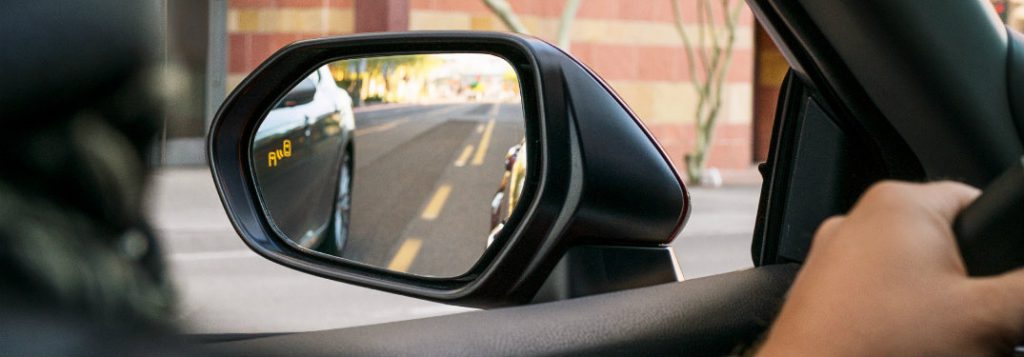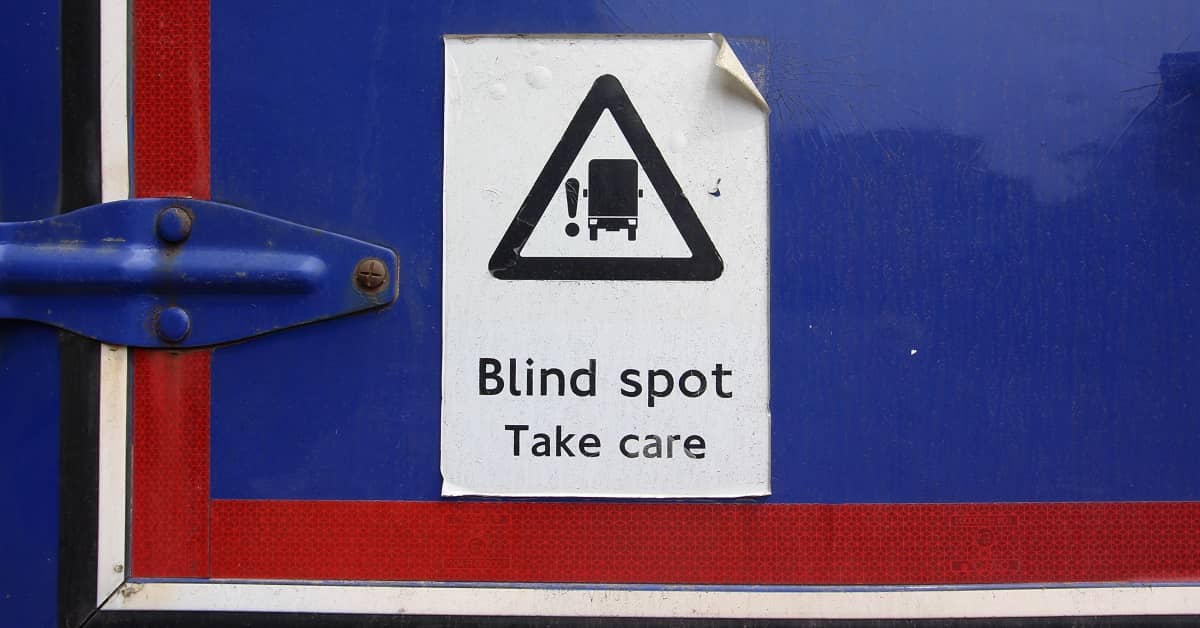What is a no zone in driving? Several notices on how to avoid dangerous situations related to this issue. Let’s follow along with Car From Japan right today.
Contents
What Is A No Zone In Driving?
You may notice the more obvious thing is that when driving a car, the perspective will be very different when you ride a motorbike, and the view from a car is much more limited.
When riding a 2-wheeler, you can easily observe the front and the sides. The rear part can be viewed in the rearview mirror (for motorbikes) or turned to look (for slow-moving bicycles). In addition, the motorbike’s engine sound also causes a certain amount of attention. For example, if you hear the sound of the engine next to you, you will know that there is a driver nearby. As a result, the feeling of controlling space and obstacles is easier for 2-wheelers.
But with cars, the experience is far from different. Sitting in a car can be quite a good soundproofing, while the feeling of ambient noise is significantly reduced, especially with luxury cars. Dark-tinted glass also reduces visibility a bit. However, the driver sometimes can not realize that other vehicles are approaching. In addition, there are many obstructed viewing angles due to the car’s boxy construction. Some are obscured by the corner pillars or the omitted space between the rearview mirrors. Those unseen places create blind spots or no zones in driving.
A no zone in driving is a space where the driver cannot see or look directly through the mirrors. Common no-zones are limited visibility in the rearview mirror and in front of or behind the car.
The dangers probably caused by a no zone are especially evident when the driver controls the vehicle heading to intersections, changing lanes, or parking. The no-zone makes it impossible for the driver to see the cars in the same or different lanes from behind or ones running through the intersection, etc., making turning or changing lanes extremely difficult.
These circumstances become super dangerous due to the driver’s inability to observe and handle the sudden situation. In other words, it is the area outside the car that is obscured, not in the driver’s view. The expression no-zone does not seem very clear to some extent because it is not a point but an area. Perhaps it would be more appropriate to be called a blind zone or a blind-spot area. Most likely, as people are used to the term no-zone or blind spot, you can use either for convenience.

Noticeable No-zone Position In Driving
No-zones are the areas that the driver cannot see from the driver’s seat. Even with the view through the rear mirror, there are many reasons for the driver’s reduced visibility, such as the vehicle design, the structure (high seat, small glass), or even the driver’s height.
Depending on the type of vehicle and its size, each will have a different No-Zone limit. Among vehicles, small two-seater roadsters or hatchbacks have the smallest blind zones, while large trucks such as containers have the largest no-zones.
Typically, the blind zones will include four areas, the front, the back, and the car sides. If it is in front of the car, a no zone will extend from 6m to 7.6m, at the back can be up to 61m (equivalent to more than 15 sedan body lengths), while the two sides are even wider (to the edge of the road). That is why you should avoid going near enormous containers or large trucks because it is super threatening.
The rearview mirror blind spot
This blind spot is located in the reflective area of the two rearview mirrors on either side of the vehicle. It makes many people confused and think that the left or right road is empty and proceed to change lanes. These zones are super dangerous because most accidents come from here, especially when the car is running at high speed.
Therefore, if drivers want to change lanes, cross the road, or turn around, always control it at a slow and firm speed.
A no-zone in front of the car
Front blind spots are available in high-ground vehicles such as SUVs, pickups, trucks, etc. Although high-ground vehicles provide good forward visibility, the high bonnet also increases the range of no-zones in front of the car.
These spots are often dangerous when driving slowly in residential areas with children. Therefore, the driver needs to observe the safe areas before changing direction or moving the vehicle. People who switch from sedans to SUVs also need to practice changing their blind spot perception. In particular, in the corners of the sleeve, if there is no roadside warning mirror, drivers should honk to give a warning signal every time they turn a corner.
A no zone behind the car
This no zone is the space behind the rear door that cannot be seen with the naked eye or through the rearview mirror. This is the largest blind spot when sitting in the driver’s seat. It is right behind the car and extends to several meters, causing many rearing accidents involving children or hitting columns, rocks, etc.
One of the best ways to ensure safety in all cases is to equip a backup camera or sensor. If not, the driver needs to carefully check the safety range before reversing, especially in residential areas or with children.
Other no zone in driving
In addition to the above common blind spots/no-zone types, you will see other areas. Among them, some are not very dangerous. However, you still need to pay extra attention to your safety and those around you.
- The area around the car: when moving forward or backward, there will be a narrow right in front and behind the car that we can’t see, even if there is a forward or reverse camera. And in areas you can’t see, which can be dangerous, it’s like a blind spot. If you step into the car outside without looking, it’s easy to bump into bricks and stones.
- The part that is obscured by the rearview mirror, this small part is located near column A, so it can be combined with the blind spot caused by column A.
- Underbody part: this is a one-true blind area because, of course, it can not be shown for anyone to see. And there are no cars equipped with underbody cameras.
- The top part: the car only moves horizontally, parallel to the road surface, so this “blind” part does not affect much.

How To Avoid A No Zone In Driving?
We have just scrolled through the answer to the “What is a no zone in driving” question, let’s get to the next parts.
Overall, the basic factors that constitute a no zone in a car are the design and the sitting posture of the driver. Much of the cause of blind spots is due to the structural design of the vehicle. Improper rear-view mirror adjustment is also one of the causes of no zones. If you are sitting in the cockpit and front of you are 12 directions, the blind spot position is usually at 4 and 8 o’clock. However, you can fully adjust the rearview mirror to minimize blind spots in this situation.
Fix blind spots on both sides of the car (can’t see through the rearview mirror)
Measuring to adjust the mirror system or the rearview mirror in the car. After that, start tilting your head until it hits the driver’s side window. Right from this position, change the left mirror so you can easily observe the rear corner.
Therefore, if a car moves forward from behind, you will first see it from the rearview mirror. When the car intends to pass and turn signals, you should wait until the car exits the rearview mirror, then it must have been in the field of view of the left mirror.
Many drivers only adjust the rearview mirror to observe the passengers in the car, which causes the visibility to decrease. Because the rearview mirror is not adjusted properly, they have to widen the left and right mirrors, causing larger blind spaces on the side of the vehicle.
The solution that some drivers choose is to mount a small spherical mirror on the left mirror, which will help the view become wider. Never turn your head to look directly, but through the mirror system, until you are sure the car is on your left. If needed, you can also do it with the right mirror.
Fix the blind spot in front of the car
Observe in advance from afar to get a sense of the upcoming risk. Like when a car going in the opposite direction is about to enter the blind spot, you already recognize it and are not surprised, assuring your safety more than ever.
Overcoming other dangerous no-zones at the bottom, roof, front, or rear of the vehicle
The simplest and safest way to rule it is to get out of the car for a visual inspection. For example: see if there is any rock lying right in the front or behind the vehicle without noticing. Or you can opt for a modern blind-spot warning system. This system will monitor hidden spots or objects around the vehicle and alert the driver.

The system is an active blind spot monitor consisting of electromagnetic transmitters mounted on the rearview mirror, around the body, or rear bumper responsible for emitting electromagnetic waves on the moving vehicle. In addition, there may be additional cameras placed on the two rearview mirrors.
The electromagnetic transmitter will recognize and send signals to the controller when a vehicle behind or on your side comes too close. The system will warn you by playing sounds or vibrating the steering wheel. Many upgraded models will even show you how to handle the situation smoothly.
>> See more: Eye-Opening Truck Driving Tips That Will Save Lives
Is the active no-zone warning system worth the money?
These active blind-spot warning systems, are they worth the money? After all, most manufacturers offer this system as an optional extra when purchasing a vehicle. The worthy-for-money consideration also depends on several factors:
- The size of your vehicle. The larger the car, the more no zones or blind spots it will have. So, the no-zone detector may be a helpful safety tool for large SUVs or family Minivans.
- The visibility of your vehicle. If the car has a wide field and large windows, you may not need a warning system.
- The operating condition of the vehicle. The no-zone warning system works best on multi-lane highways where drivers often change lanes at high speeds. If most of the time you travel in an urban city or slow-moving situation, this system becomes almost useless.
- You should experience this system directly to get the most accurate assessment. Test drive a vehicle equipped with BSM, so you can decide if it’s worth the money and suitable for your needs.
Wrapping Up
We have just answered the question of what is a no-zone in driving and got some notices to avoid dangerous no-zone situations. Hope you can find this piece of info helpful at some point. We will see you again with others driving tips and terms.



